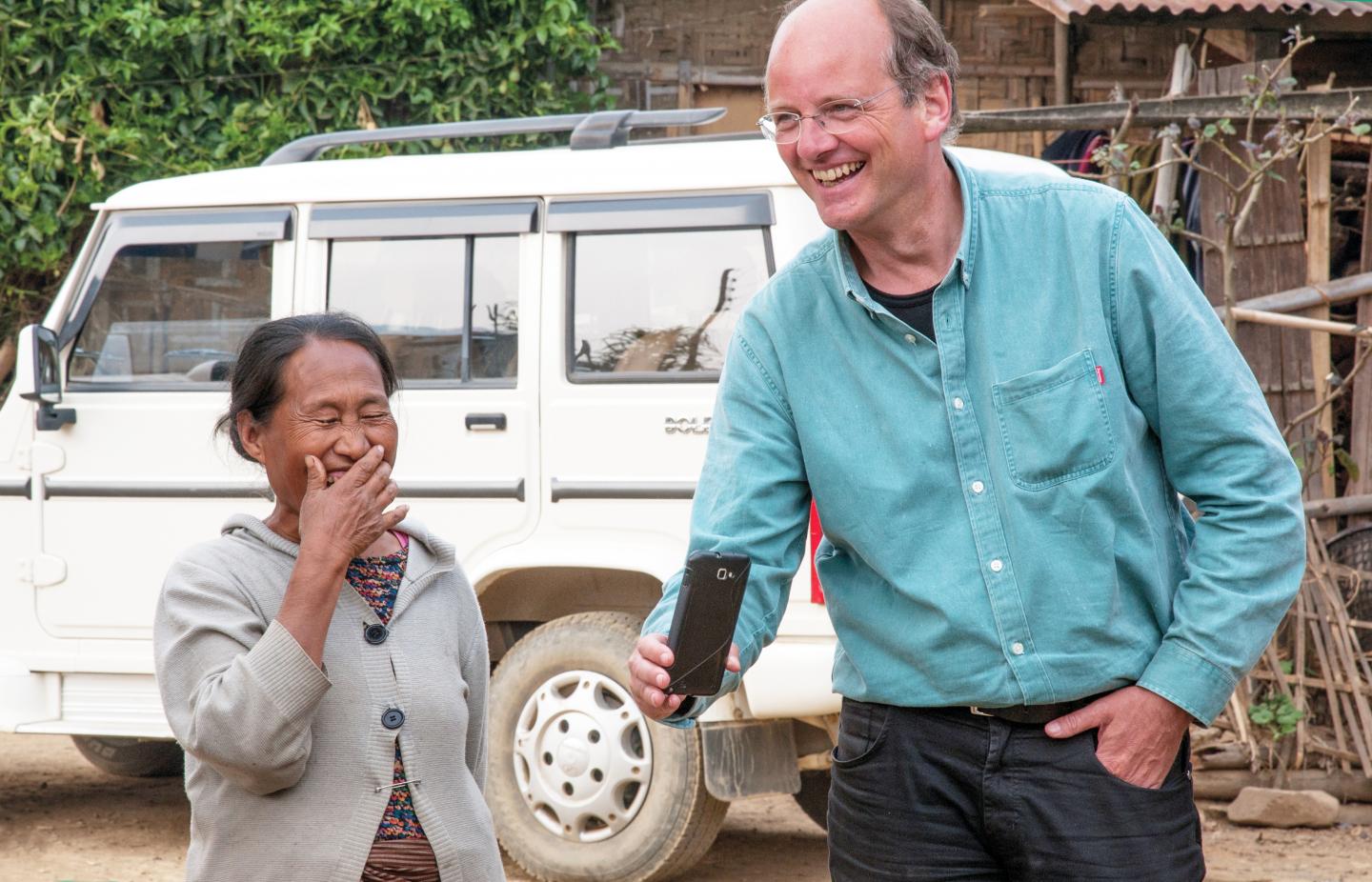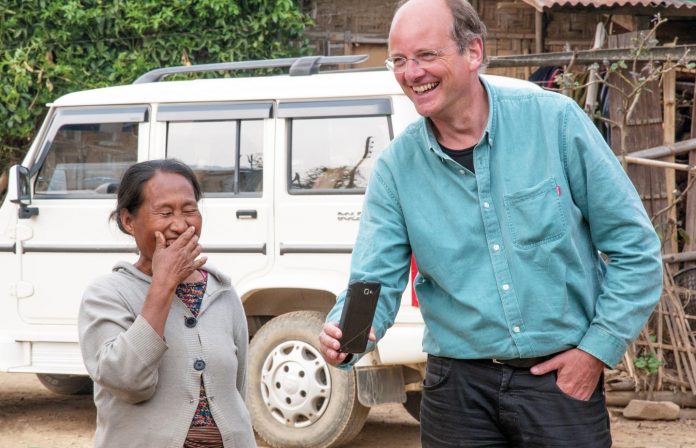
Photo: The ERC is linked to field research in different parts of the world. For example, investigations in the Indian-Burmese border region are being continued, which have already been conducted by…
view more
Credit Image: © Sara Jagiolla
Together with scientists from the universities of Santiago de Compostela, Spain, and Brighton, Great Britain, Professor Johannes Müller, archaeologist at Kiel University (CAU), has been awarded a grant for an innovative research project, which will be funded by the European Research Council (ERC) of the European Union over the next six years with around ten million euros.
Under the title “Material Minds”, the scientists want to investigate the link between material culture and human activity from the Paleolithic Age to the Middle Ages in different forms of society. They assume that “materiality”, i.e. everyday objects and the built environment, plays a role in our knowledge processing that is comparable to that of language.
“Through their design and effect, objects embody standards and ideas, but also our traditions,” explains Müller. “Seeing” is not something objective, but rather changeable. It depends on the contexts in which we live, but also on the power relations that determine us. Standardized visualization determines the mind and can serve as a means of exercising power”.
The basis of the project is a database that depicts visual and perceptual behavior in different social and historical contexts. In a pilot study, the researchers investigated the visualization of ceramics and monuments of prehistoric European societies with the help of so-called eye-trackers, among other things, which are used to capture the gaze. They found that obviously very different, standardized eye movements are generated, depending on what is socio-ecologically constitutive for societies. In fact, they recognized neurological changes that not only influence ‘seeing’, but normalize it. From this observation, the relevance of the project for contemporary societies can be deduced. It examines material culture and representationalism as areas of danger and opportunity and explores the question: Is our vision manipulated and if so, how?
Over the next six years, the international team of researchers will conduct numerous case studies for prehistoric and ethnoarchaeologically ascertainable contemporary societies of different character. They expect fundamental results on questions of social research, historiography and art appreciation.
Archaeologist Müller explains: “The project focuses on the potential for action of reification in world history. This is of great relevance, especially in today’s world, where communication takes place less and less via writing and where perception plays a key role in digital technologies, as we can see from the current pandemic debate”.
The interdisciplinary research project, which is funded by an ERC Synergy Grant and involves not only archaeologists but also a philosopher and a neurologist, combines the life, cultural and natural sciences in a new way. “With archaeology, a science is integrated which, like no other, explores material culture also in its temporal dimension. With neurology, the connections between visualization and brain development can be investigated. And with modeling philosophy, an implementation of both paths of knowledge with a socially comprehensive claim is envisaged”, notes archaeologist Müller from the Kiel Institute for Pre- and Protohistoric Archaeology.
The proposal entitled: “XSCAPE: Material Minds: Exploring the Interactions between Predictive Brains, Cultural Artifacts, and Embodied Visual Search” has successfully passed a three-stage review process and is the first ERC Synergy Grant for Schleswig-Holstein ever. A total of 438 applications were submitted, 35 of which were selected for funding, corresponding to an approval rate of eight percent. Four scientific teams are involved in this project, which will be funded with almost ten million euros over six years, including 2.2 million euros for the CAU. Two of the teams are from the Consejo Superior de Investigaciones Cientificas Spain. They are led by Luis M. Martinéz and Felipe Criado-Boado, who is also responsible for coordinating the project. The other two teams are located at the University of Sussex, Great Britain, under the leadership of Andy Clark, and at the CAU under Prof. Johannes Müller.
ERC Synergy Grants are the only funding instrument of the EU that allows collaborative research without thematic restrictions. Together with the relatively long funding period of six years and a generous budget of ten million euros for a maximum of four teams, it makes it one of the most sought-after funding instruments in Europe and worldwide. However, only outstanding researchers who jointly devote themselves to a project that leads to discoveries at the interfaces between established disciplines and to substantial progress at the frontiers of knowledge are eligible for funding. Only very few applications fulfill these requirements, which is why ERC Synergy Grants are among the most prestigious awards in science.
###
Pictures are available for download:
http://www.
The ERC is linked to field research in different parts of the world. For example, investigations in the Indian-Burmese border region are being continued, which have already been conducted by Kiel University in recent years. The picture shows archaeologist Johannes Müller, one of the principal investigators of the proposal, during an interview.
© Sara Jagiolla
http://www.
ERC also investigates the visualization of architecture. The picture shows the door of a house in a village in the southeast Indian mountain region. The scientists want to decipher the effect of coded abstraction, here originally combined with elements of “head hunting”.
© Sara Jagiolla
http://www.
Objects from prehistoric times, such as these rich furnishings from the Bronze Age, are examined for their visual impact using eye-trackers.
© Sara Jagiolla
http://www.
Eye tracking will play a central role in the ERC project. In a pilot study, corresponding processes were applied to the so-called bell-cup ceramics (approx. 2400 BC) Eye tracking processes will play a central role in the ERC project. In a pilot study, corresponding methods were applied to the so-called bell-cup ceramics (ca. 2400 BC).
© Felipe Criado-Boado, Santiago de Compostela
http://www.
The partners of the project „XSCAPE: Material Minds: Exploring the Interactions between Predictive Brains, Cultural Artifacts, and Embodied Visual Search”.
© Felipe Criado-Boado, Santiago de Compostela
Press release of the European Research Council (ERC):
https:/
Contact:
Prof. Dr. Johannes Müller
Institute for Pre- and Protohistoric Archaeology
Kiel University
johannes.mueller@ufg.uni-kiel.de
+49 431/880 3391
Kiel University
Press, Communication and Marketing, Claudia Eulitz, Text/editing: Angelika Hoffmann
Postal address: D-24098 Kiel, Germany,
Telephone: +49 431 880-2104, Fax: +49 (0)431 880-1355
E-mail: presse@uv.uni-kiel.de Internet: http://www.
Facebook: http://www.
TDnews (tunisiesoir.com)















